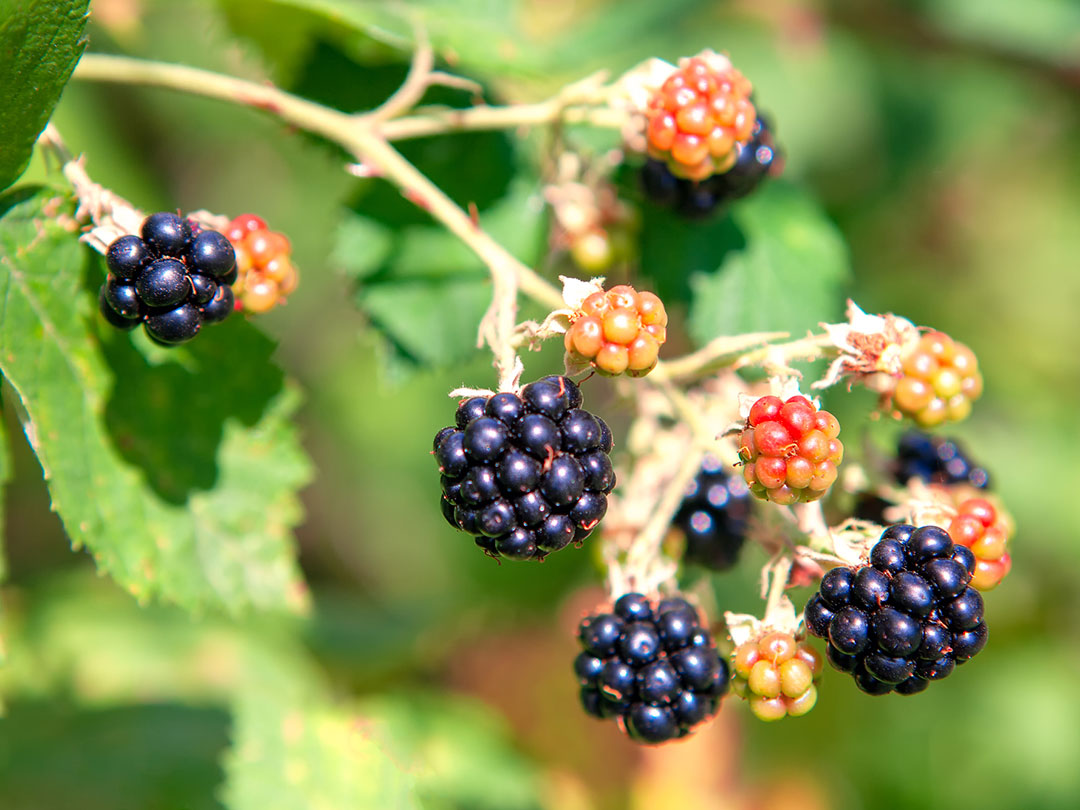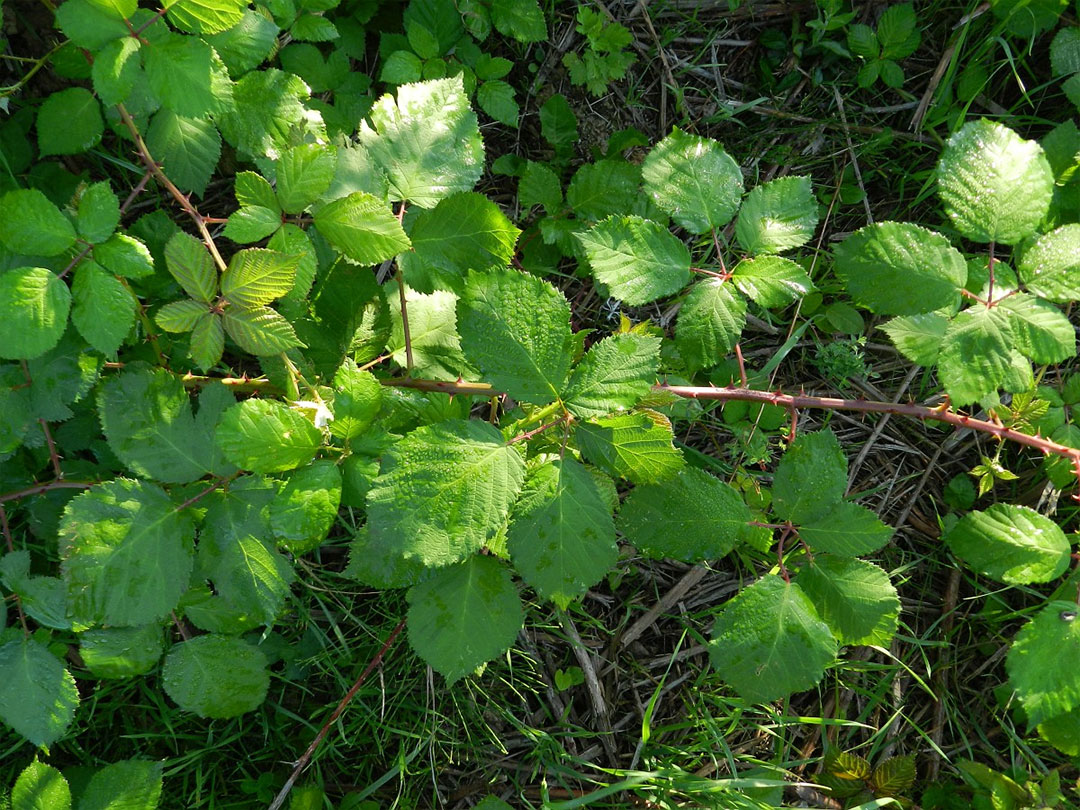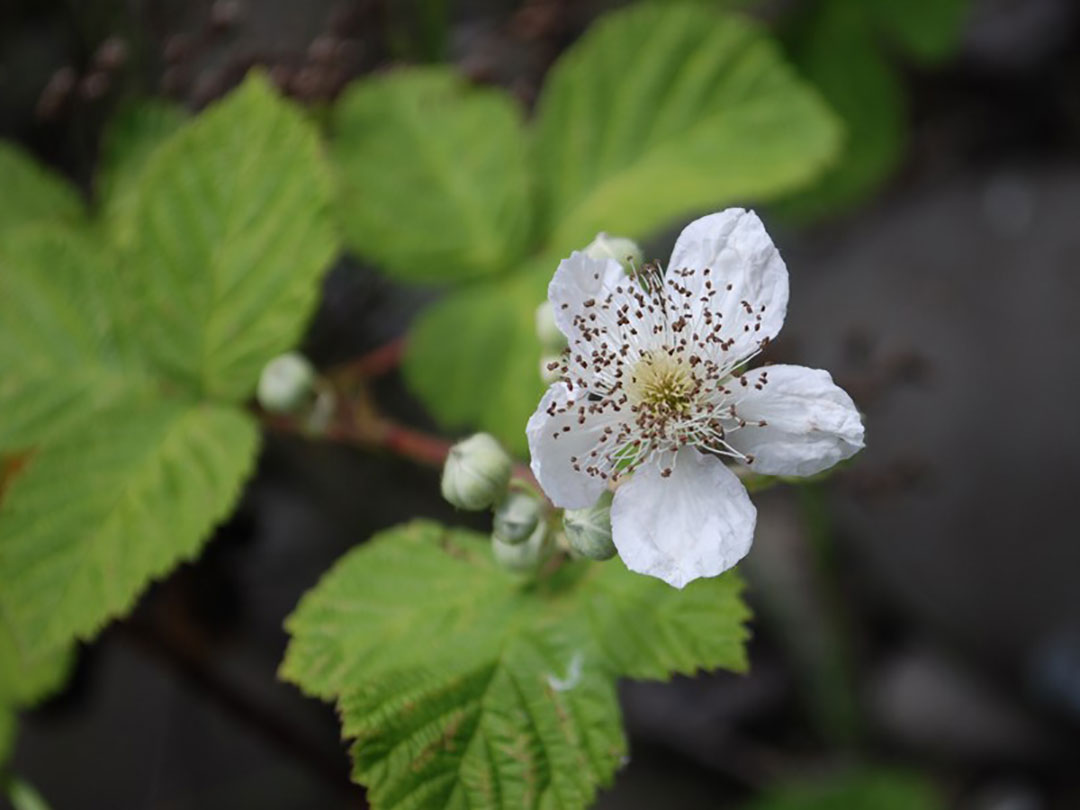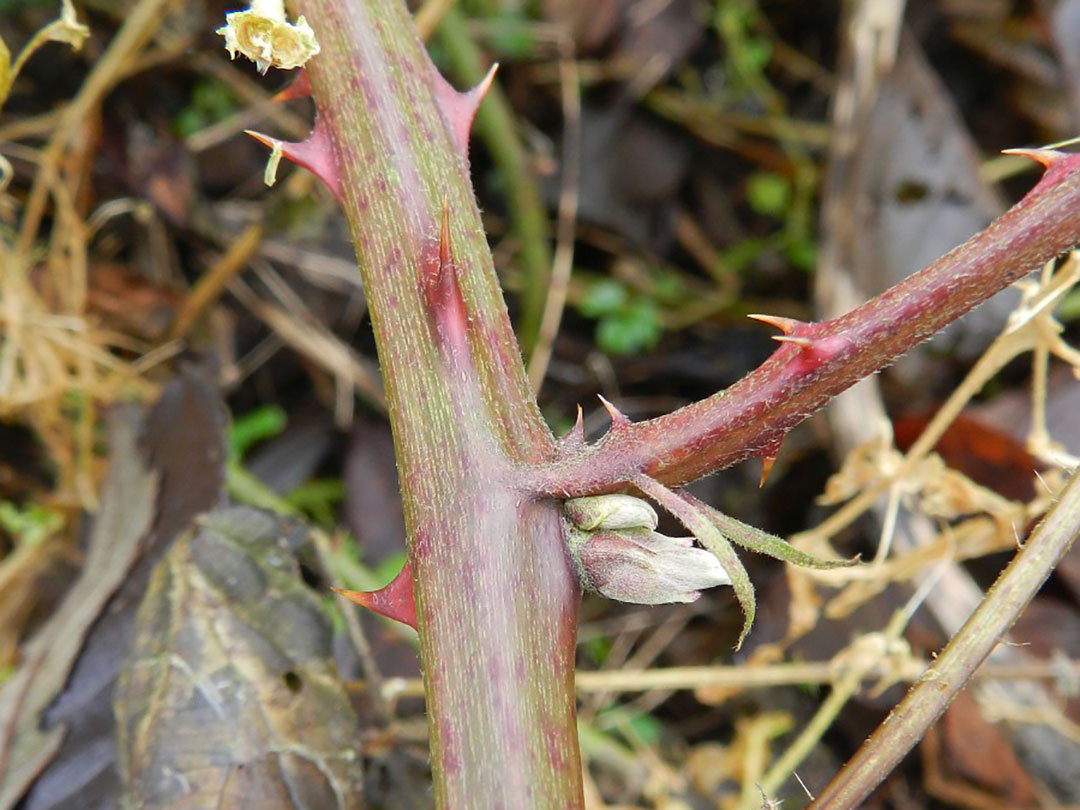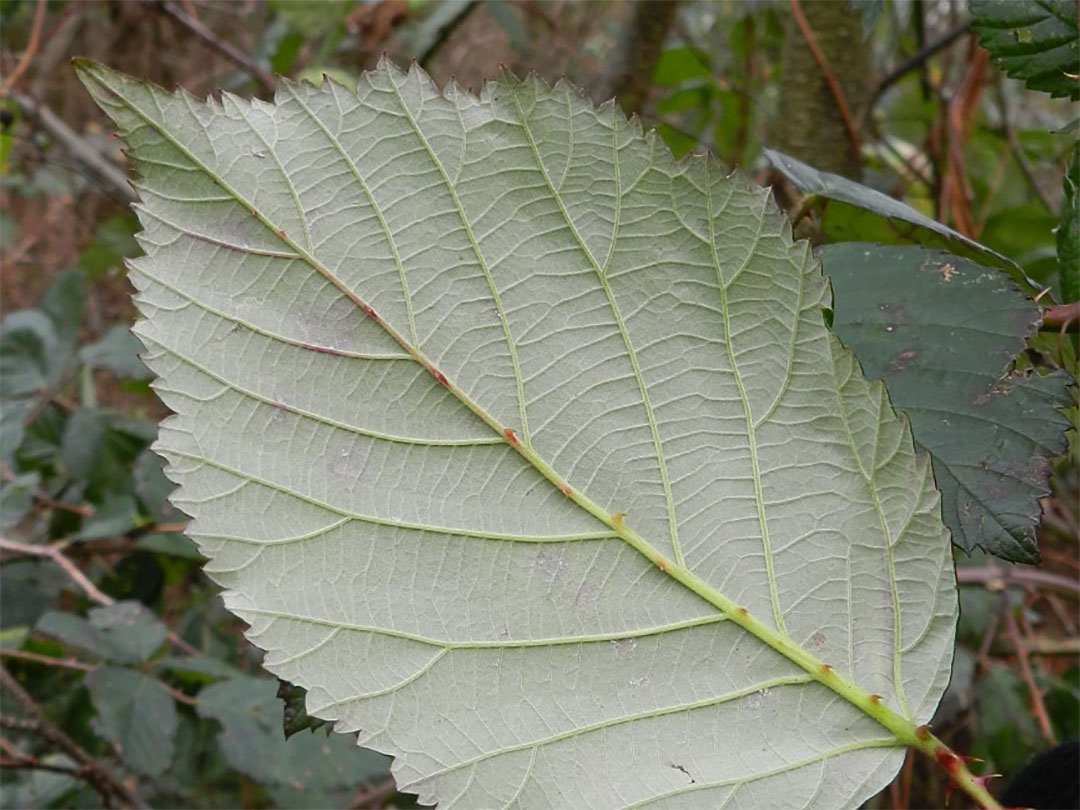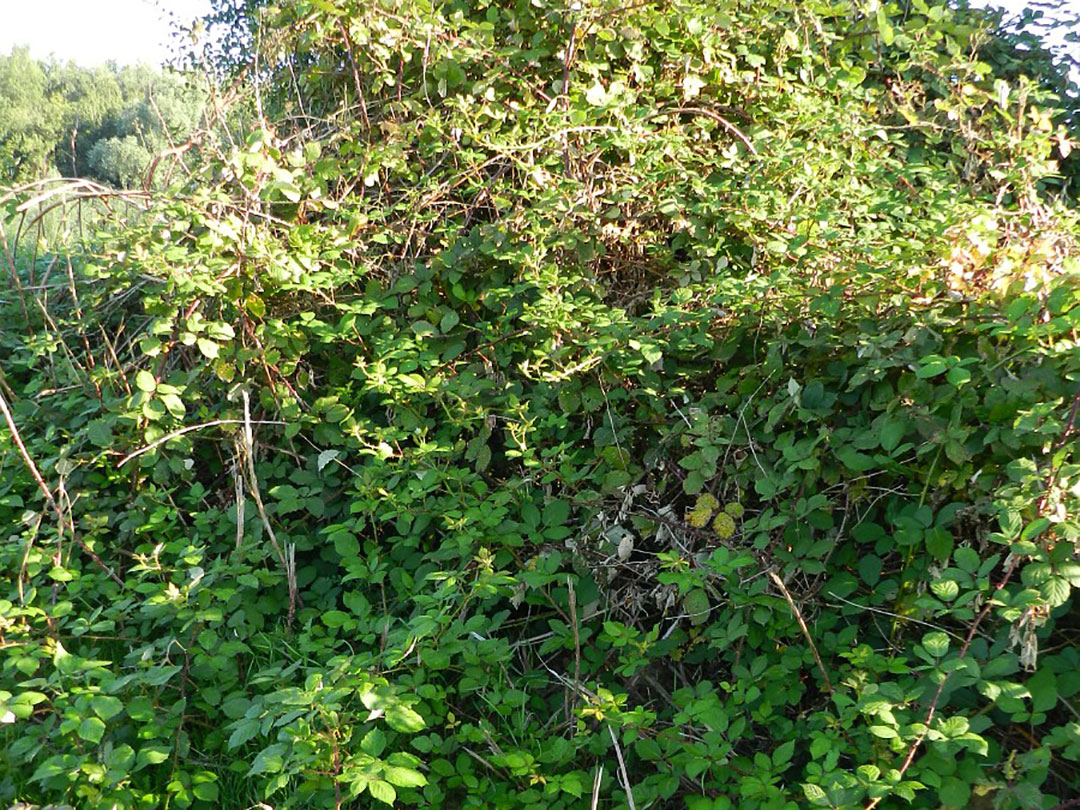Invasive Plant Details
Back to Full ListHimalayan Blackberry
Latin Name: Rubus armeniacus
Identification
Flower: White or pink, five-petaled flowers that bloom in late spring to early summer.
Leaves: Compound leaves with 3-5 leaflets, dark green, and serrated edges.
Stems: Thick, arching, and thorny, growing up to 6 meters long. Stems root at the tips, allowing the plant to spread.
Growing Environment: It prefers moist to wet habitats. It is commonly found in disturbed areas along railway lines, roadsides and fence lines. It is also abundant in riparian zones, edges of wetlands and other areas that experience occasional flooding such as irrigation channels.
Growth Habit: A perennial, invasive shrub that forms dense thickets through vegetative growth and seeds. It spreads aggressively by rooting at stem tips and via rhizomes, creating impenetrable tangles. In situ, Himalayan blackberry appears as large, thorny masses that dominate disturbed landscapes and crowd out other vegetation.
Impacts on Environment
Impacts: Highly invasive in many regions. The thick, impenetrable thickets of live and dead canes degrade the quality of riparian habitats as well as forest edges, transportation and utility corridors, and fence lines.

